Just copy-paste and run.
To check lowercase and uppercase letters, you have to check if the character is between the extreme letters : 'A' and 'z', if so, check if the character is greater or equal than 'a', if so, it's lowercase letter, or, check if the character is less or equal than 'Z', if so, it's an uppercase letter. Get the idea? Next is your code with some changes to make it run in EMU8086 :
.stack 100h
.data
buff db 'aB[C*E-G^h#$'
lower_counter dw 0 ;COUNTER FOR LOWERCASE LETTERS.
upper_counter dw 0 ;COUNTER FOR UPPERCASE LETTERS.
msj1 db 13,10,'lowercase letters : $'
msj2 db 13,10,'uppercase letters : $'
str db 6 dup('$') ;STRING TO STORE NUMBER.
.code
;INITIALIZE DATA SEGMENT.
mov ax,@data
mov ds,ax
mov bx, offset buff
cykluss:
mov al, [bx] ;reading all characters
inc bx ;increasing char in string
cmp al,'$' ; end of line?
je supp
;---CHECK LETTERS ON THE EXTREMES ('A','z').
cmp al,'A' ; if char < 'A' then IT'S NOT A LETTER.
JL cykluss
cmp al,'z' ; if char > 'z' then IT'S NOT A LETTER.
JG cykluss ; if char > 'z' then go to the start(cykluss)
;---CHECK LETTERS IN THE MIDDLE ('Z','a').
;---REMEMBER : IF NEXT LINES ARE EXECUTED, IT MEANS "AL"
;---HOLDS A VALUE BETWEEN 'A' AND 'z' (65..122).
cmp al,'a'
JGE its_lowercase ; if char >= 'a' then IT'S A LOWERCASE LETTER.
CMP al,'Z'
JLE its_uppercase ; if char =< 'Z' then IT'S AN UPPERCASE LETTER.
jmp cykluss ; if (char > 'Z') and (char < 'a') then IT'S NOT A LETTER.
its_lowercase:
inc lower_counter
jmp cykluss
its_uppercase:
inc upper_counter
jmp cykluss
supp:
;DISPLAY TOTAL LOWERCASE.
mov ah, 9
mov dx, offset msj1
int 21h
call dollars
mov ax, lower_counter ;PARAMETER FOR NUMBER2STRING.
call number2string ;RESULT RETURNS IN "STR".
mov ah, 9
mov dx, offset str
int 21h
;DISPLAY TOTAL UPPERCASE.
mov ah, 9
mov dx, offset msj2
int 21h
call dollars
mov ax, upper_counter ;PARAMETER FOR NUMBER2STRING.
call number2string ;RESULT RETURNS IN "STR".
mov ah, 9
mov dx, offset str
int 21h
;FINISH THE PROGRAM.
mov ax,4c00h
int 21h
;------------------------------------------
;NUMBER TO CONVERT MUST ENTER IN AX.
;ALGORITHM : EXTRACT DIGITS ONE BY ONE, STORE
;THEM IN STACK, THEN EXTRACT THEM IN REVERSE
;ORDER TO CONSTRUCT STRING.
proc number2string
mov bx, 10 ;DIGITS ARE EXTRACTED DIVIDING BY 10.
mov cx, 0 ;COUNTER FOR EXTRACTED DIGITS.
cycle1:
mov dx, 0 ;NECESSARY TO DIVIDE BY BX.
div bx ;DX:AX / 10 = AX:QUOTIENT DX:REMAINDER.
push dx ;PRESERVE DIGIT EXTRACTED FOR LATER.
inc cx ;INCREASE COUNTER FOR EVERY DIGIT EXTRACTED.
cmp ax, 0 ;IF NUMBER IS
jne cycle1 ;NOT ZERO, LOOP.
;NOW RETRIEVE PUSHED DIGITS.
mov si, offset str
cycle2:
pop dx
add dl, 48 ;CONVERT DIGIT TO CHARACTER.
mov [ si ], dl
inc si
loop cycle2
ret
endp
;------------------------------------------
;FILLS VARIABLE STR WITH '$'.
;USED BEFORE CONVERT NUMBERS TO STRING, BECAUSE
;THESE STRINGS WILL BE DISPLAYED.
proc dollars
mov si, offset str
mov cx, 6
six_dollars:
mov al, '$'
mov [ si ], al
inc si
loop six_dollars
ret
endp
What we need to do is to check if AL is between two numeric ranges :

